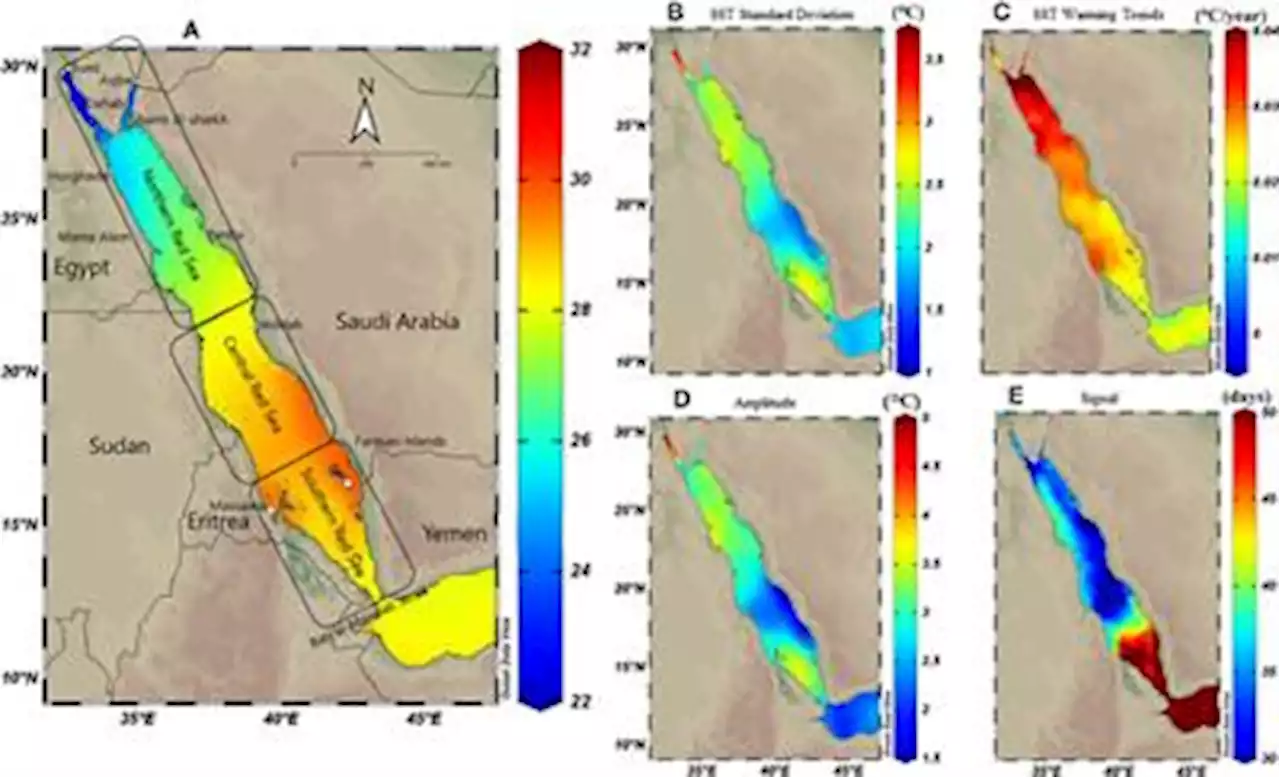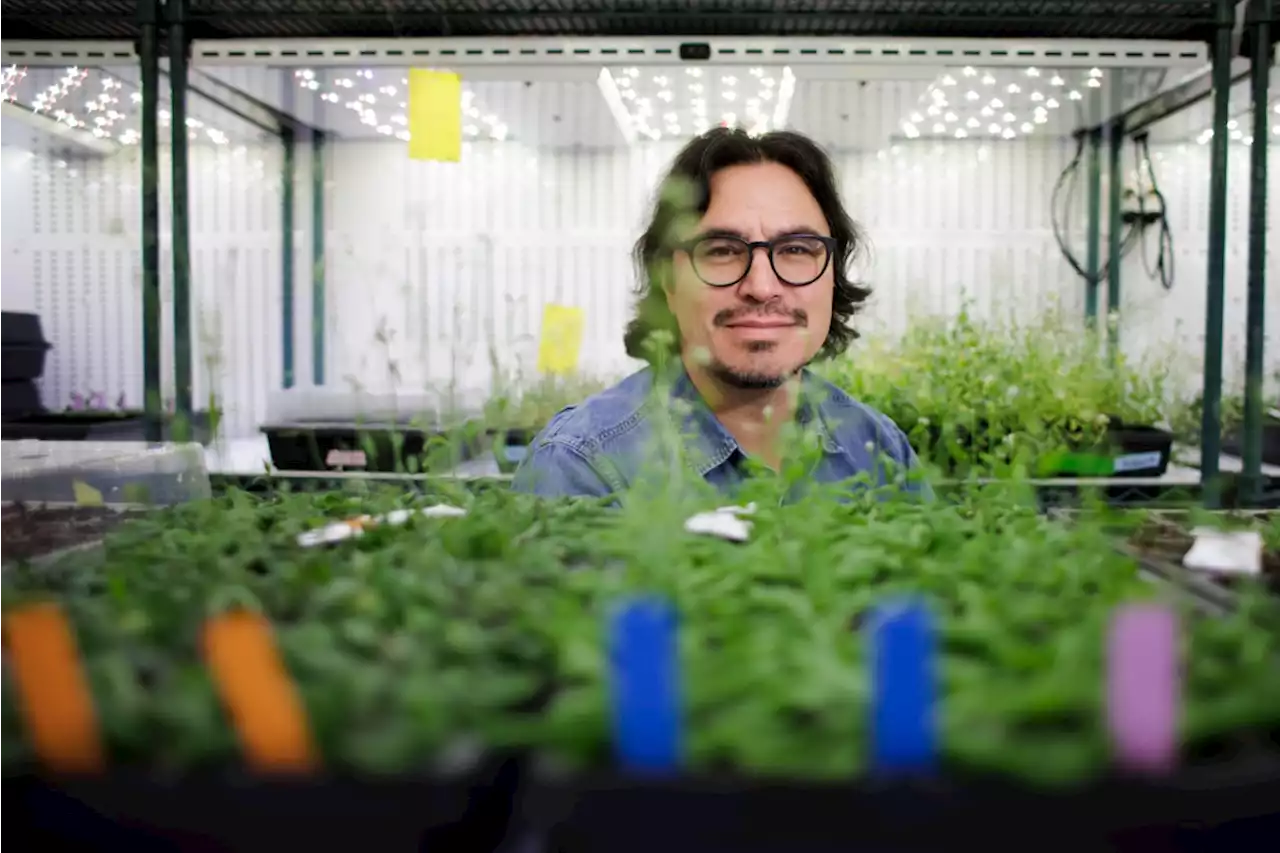An astrophotographer has captured a highly detailed image of the Red Planet reappearing from behind the moon after a lunar occultation.
An awe-inspiring new image has captured the moment a tiny and unusually vibrant Mars rose from behind the moon's crater-covered surface during a recent eclipse.
The new image was captured by professional astrophotographer and Arizona resident Andrew McCarthy , who shared the stunning shot on Twitter . To acquire his ultra-detailed image, McCarthy utilized an astrophotography technique known as"lucky imaging," which involves taking quick bursts of tens, hundreds or thousands of photos and stacking the best ones on top of each other to form a single, detailed image. Due to the speed the moon travels, McCarthy had a window of just 10 seconds to take his images to avoid the lunar surface becoming blurred in the final picture.
"Overall it's one of the most difficult shots I've ever captured," McCarthy said. But it is also"one of my favorite moments since beginning this hobby."
Malaysia Latest News, Malaysia Headlines
Similar News:You can also read news stories similar to this one that we have collected from other news sources.
 Frontiers | Appraisal of coral bleaching thresholds and thermal projections for the northern Red Sea refugiaCorals in the northern Red Sea exhibit high thermal tolerance despite experiencing frequent and severe heat stress. It is assumed that corals in the Red Sea have similar bleaching thresholds (32°C), and thus, the apparent bleaching tolerance of corals in the NRS is due to the lower ambient temperature (25–28°C) of the region that remains under their physiological maxima. Whether bleaching patterns along the Red Sea are independent of the local maximum monthly mean and aligned with the proposed 32°C threshold has yet to be determined. Here, we used surface seawater temperature remote sensing data (1982–2020) to model spatial distributions of Degree Heat Weeks across the Red Sea using coral thermal threshold values of 30, 31, and 32°C. We also used the Coupled Model Intercomparison Project Phase 5 model outputs to predict warming trends in the Red Sea under different representative concentration pathway scenarios. Our data show the 32°C–adjusted thresholds dramatically reduced Degree Heat Weeks in the northern Red Sea, but not in central or southern Red Sea, which is consistent with bleaching observations throughout the Red Sea. Further, it is predicted that the northern Red Sea will experience the least range of warming by end of the 21st century (2–2.5°C) compared to the central and southern regions (2.7-3.1°C) under the business as usual scenario. The slower rate of warming in the northern Red Sea should help promote the refugia (i.e., the ability to maintain favorable temperature for corals) to remain functional for decades. Collectively, our results support the hypothesis that coral bleaching thresholds are independent of the local maximum monthly mean, and corals have similar thresholds throughout the Red Sea. Regional projections of warming suggest that the northern Red Sea that experiences low ambient surface seawater temperature and maximum monthly mean will not reach the proposed threshold (32°C) by end of the 21st century. Our work suggests that while globa
Frontiers | Appraisal of coral bleaching thresholds and thermal projections for the northern Red Sea refugiaCorals in the northern Red Sea exhibit high thermal tolerance despite experiencing frequent and severe heat stress. It is assumed that corals in the Red Sea have similar bleaching thresholds (32°C), and thus, the apparent bleaching tolerance of corals in the NRS is due to the lower ambient temperature (25–28°C) of the region that remains under their physiological maxima. Whether bleaching patterns along the Red Sea are independent of the local maximum monthly mean and aligned with the proposed 32°C threshold has yet to be determined. Here, we used surface seawater temperature remote sensing data (1982–2020) to model spatial distributions of Degree Heat Weeks across the Red Sea using coral thermal threshold values of 30, 31, and 32°C. We also used the Coupled Model Intercomparison Project Phase 5 model outputs to predict warming trends in the Red Sea under different representative concentration pathway scenarios. Our data show the 32°C–adjusted thresholds dramatically reduced Degree Heat Weeks in the northern Red Sea, but not in central or southern Red Sea, which is consistent with bleaching observations throughout the Red Sea. Further, it is predicted that the northern Red Sea will experience the least range of warming by end of the 21st century (2–2.5°C) compared to the central and southern regions (2.7-3.1°C) under the business as usual scenario. The slower rate of warming in the northern Red Sea should help promote the refugia (i.e., the ability to maintain favorable temperature for corals) to remain functional for decades. Collectively, our results support the hypothesis that coral bleaching thresholds are independent of the local maximum monthly mean, and corals have similar thresholds throughout the Red Sea. Regional projections of warming suggest that the northern Red Sea that experiences low ambient surface seawater temperature and maximum monthly mean will not reach the proposed threshold (32°C) by end of the 21st century. Our work suggests that while globa
Read more »
 “Hell Planet” – How This Super-Earth Got So Scorchingly HotNew ultra-precise measurements reveal the orbital path of exoplanet 55 Cancri e (55 Cnc e), a scorchingly hot super-Earth closely circling a distant star. New research sheds light on how the “hell planet” got so devilishly hot and how other worlds might become too toasty for life. That rocky worl
“Hell Planet” – How This Super-Earth Got So Scorchingly HotNew ultra-precise measurements reveal the orbital path of exoplanet 55 Cancri e (55 Cnc e), a scorchingly hot super-Earth closely circling a distant star. New research sheds light on how the “hell planet” got so devilishly hot and how other worlds might become too toasty for life. That rocky worl
Read more »
 NASA: A year only lasts 17.5 hours on the ‘hell planet’NASA has discovered that a year on a sizzling planet known as “hell planet” only lasts about 17.5 hours on Earth.
NASA: A year only lasts 17.5 hours on the ‘hell planet’NASA has discovered that a year on a sizzling planet known as “hell planet” only lasts about 17.5 hours on Earth.
Read more »
 How hell planet covered in lava got so close to its star | Digital TrendsExoplanet 55 Cancri e, known as the hell planet, reaches temperatures of 3,600 degrees Fahrenheit. Now researchers have a new theory for how it got so hot.
How hell planet covered in lava got so close to its star | Digital TrendsExoplanet 55 Cancri e, known as the hell planet, reaches temperatures of 3,600 degrees Fahrenheit. Now researchers have a new theory for how it got so hot.
Read more »
 Toothless Chihuahua who bites dubbed 'the most adoptable dog on the planet'Lord Herald's story touched the hearts of many who found him reminiscent of the imperfect pups they knew and loved.
Toothless Chihuahua who bites dubbed 'the most adoptable dog on the planet'Lord Herald's story touched the hearts of many who found him reminiscent of the imperfect pups they knew and loved.
Read more »
 Can we hack DNA to grow more food for a hotter, hungry planet?Stanford scientists have genetically re-programmed plants to grow roots that change how they gather nutrients or water.
Can we hack DNA to grow more food for a hotter, hungry planet?Stanford scientists have genetically re-programmed plants to grow roots that change how they gather nutrients or water.
Read more »
